- Interesting
- Scholarships
- UGC-CARE Journals

50 Research Ideas in Organic Chemistry
Unlocking the Potential: 50 Intriguing Organic Chemistry Research Ideas
In the world of science, organic chemistry is like the hidden language of life. It’s the study of carbon and its dance with other elements to create everything from medicines that heal to materials that make our world. Today, iLovePhD delves into 50 intriguing research ideas in this fascinating field, uncovering the secrets and innovations that drive progress in science.
50 Intriguing Organic Chemistry Research Ideas
- Green Synthesis of Organic Compounds : Explore eco-friendly methods for synthesizing organic molecules.
- Applications of Organometallic Chemistry : Discuss the use of organometallic compounds in catalysis and materials science.
- Designing Sustainable Polymers : Investigate the development of biodegradable and recyclable polymers.
- Catalytic Asymmetric Synthesis : Examine recent advances in creating chiral organic compounds.
- Supramolecular Chemistry in Drug Design : Discuss how non-covalent interactions can be harnessed for drug discovery.
- Functionalization of C-H Bonds : Explore methods for selectively functionalizing carbon-hydrogen bonds.
- Natural Product Synthesis : Highlight recent total syntheses of complex natural products.
- Electroorganic Chemistry : Discuss the use of electricity as a reagent in organic reactions.
- Molecular Machines : Explore the design and applications of synthetic molecular machines.
- Metal-Organic Frameworks (MOFs) : Investigate the use of MOFs in gas storage and separation.
- Enzyme Mimicry in Catalysis : Discuss synthetic catalysts that mimic enzyme behavior.
- Chemical Biology : Explore the interface between chemistry and biology for drug discovery.
- Organic Photovoltaics : Discuss the development of organic materials for solar cells.
- Peptide Chemistry : Investigate the synthesis and applications of peptides in drug design.
- Click Chemistry : Highlight the versatility of click reactions in organic synthesis.
- Chemoinformatics : Discuss the use of computational methods in organic chemistry.
- Bioorthogonal Chemistry : Explore reactions that are compatible with living systems.
- Green Solvents in Organic Synthesis : Examine environmentally friendly solvents for organic reactions.
- Nanocatalysis : Discuss the role of nanoparticles in catalytic processes.
- Fluorine Chemistry : Investigate the unique properties of fluorinated organic compounds.
- Carbohydrate Chemistry : Explore the synthesis and functions of carbohydrates.
- Chemical Sensors : Discuss the design of organic sensors for detecting analytes.
- Synthetic Biology : Explore the engineering of biological systems for chemical production.
- Organic Chemistry in Medicine : Highlight the role of organic chemistry in drug development.
- Heterocyclic Chemistry : Investigate the synthesis and reactivity of heterocycles.
- Chemistry of Aromatics : Discuss reactions and applications of aromatic compounds.
- Polycyclic Aromatic Hydrocarbons (PAHs) : Explore the environmental and health impact of PAHs.
- Green Extraction Methods : Investigate eco-friendly techniques for extracting natural products.
- Organic Chemistry in Food : Discuss the chemistry behind food flavor and preservation.
- Chemistry of Natural Dyes : Explore the use of organic compounds as dyes.
- Artificial Sweeteners : Investigate the chemistry of sugar substitutes.
- Chemistry of Medicinal Plants : Highlight the organic compounds found in medicinal plants.
- Organic Synthesis with Flow Chemistry : Discuss continuous-flow methods in organic synthesis.
- Stereochemistry : Explore the importance of stereochemistry in organic reactions.
- Chirality in Pharmaceuticals : Discuss the role of chirality in drug design.
- Green Chemistry Metrics : Investigate metrics for assessing the sustainability of organic reactions.
- Photochemistry : Explore the use of light in driving organic reactions.
- Chemistry of Natural Toxins : Highlight the structures and effects of natural toxins.
- Chemistry of Pharmaceuticals : Discuss the synthesis and mechanisms of action of common drugs.
- Organic Chemistry in Cosmetics : Explore the chemistry of cosmetic products.
- Organic Chemistry in Art Conservation : Investigate the role of organic chemistry in preserving artworks.
- Radical Chemistry : Discuss the use of radicals in organic synthesis.
- Chemistry of Terpenes : Explore the diverse structures and functions of terpenes.
- Organic Chemistry of Vitamins : Highlight the organic compounds essential for health.
- Biocatalysis : Discuss the use of enzymes in organic synthesis.
- Chemistry of Lipids : Investigate the structure and functions of lipids.
- Chemistry of Amino Acids : Explore the building blocks of proteins.
- Chemistry of DNA : Discuss the structure and chemical properties of DNA.
- Nucleic Acid Chemistry : Investigate the synthesis and modification of nucleic acids.
- Organic Chemistry in Environmental Remediation : Highlight the use of organic compounds for cleaning up pollutants.
In closing, organic chemistry isn’t just about molecules; it’s about endless possibilities. These 50 research ideas showcase the diverse avenues researchers explore , from green synthesis to life-saving drugs. As we continue to unravel the mysteries of carbon, we can look forward to a future where science and innovation walk hand in hand, shaping a brighter world for us all.
- Aromatic chemistry
- Biocatalysis
- Bioorthogonal reactions
- Carbon compounds
- Catalysis Sustainable polymers
- Chiral compounds Chemical biology
- Click chemistry Computational chemistry
- DNA chemistry
- Drug discovery
- Environmental remediation
- Flow chemistry Stereochemistry
- Green metrics
- Green solvents
- Green synthesis
- Nanocatalysis Heterocyclic compounds
- Organic Chemistry
- Organic photovoltaics
- Peptide synthesis
- Photochemistry
- Research Ideas
- Supramolecular chemistry
- Terpenes Vitamins
Download Research Papers for Free: Legal and Ethical Methods
How to use chatgpt to write a scientific research paper, phd memes about research life | high impact phd memes, most popular, what is research design and how to frame it, 10 ai tricks to supercharge your research paper, one nation one subscription (onos): free journal download, want ₹10 lakhs for your research check this, working sci-hub proxy links 2024: access research papers easily, top 7 artificial intelligence (ai) tools in scientific research 2024, top 100 journal publications in the world 2024, science academies summer research fellowship 2025, best for you, 24 best online plagiarism checker free – 2024, what is a phd a comprehensive guide for indian scientists and aspiring researchers, popular posts, how to write a research paper a complete guide, what is a scopus indexed journal, popular category.
- POSTDOC 317
- Interesting 262
- Journals 236
- Fellowship 136
- Research Methodology 103
- All Scopus Indexed Journals 94
Mail Subscription

iLovePhD is a research education website to know updated research-related information. It helps researchers to find top journals for publishing research articles and get an easy manual for research tools. The main aim of this website is to help Ph.D. scholars who are working in various domains to get more valuable ideas to carry out their research. Learn the current groundbreaking research activities around the world, love the process of getting a Ph.D.
Contact us: [email protected]
Google News
Copyright © 2024 iLovePhD. All rights reserved
- Artificial intelligence
Important Current Research Topics in Organic Synthesis
This guide is intended to list some topics for Organic Chemists that one might specialize in:
Sustainable and Green Chemistry: The development of more environmentally friendly and sustainable methods for synthesizing organic molecules is an important area of research. This includes the use of renewable resources, catalysts, and solvents that minimize waste and reduce energy consumption.
New Methods for C-H Bond Functionalization: Functionalizing C-H bonds directly, rather than relying on pre-functionalized starting materials, is an emerging area of research. This can simplify synthetic routes and reduce waste.
Synthesis of Complex Molecules: The development of new synthetic strategies and methods for the efficient and selective synthesis of complex molecules, such as natural products and pharmaceuticals, remains an active area of research.
Enantioselective Catalysis: The development of new chiral catalysts and strategies for enantioselective synthesis is an important area of research. This includes the development of new organocatalysts, metal catalysts, and biocatalysts.
Photochemistry: The use of light to drive organic reactions is an emerging area of research. This includes the development of photochemical reactions that are greener and more efficient than traditional thermal methods.
Bioconjugation: The development of new methods for conjugating organic molecules to biomolecules is an important area of research. This includes the development of methods for site-selective conjugation and the design of new bioconjugates for drug delivery and diagnostics.
Total Synthesis of Natural Products: The synthesis of complex natural products remains a major goal of organic synthesis. Advances in synthetic methodology and techniques for complex molecule synthesis are driving progress in this area.
Flow Chemistry: The use of continuous flow reactors for organic synthesis is an emerging area of research. This approach can offer advantages in terms of reaction efficiency, product purity, and scalability.
More Research Topics
Drug Discovery , Process Research
Selection of Jobs for Organic Chemists
Site Search any all words
Main Categories
- Organic Reactions
- Org. Chem. Highlights
- Presentations
- Chemistry Tools
- Ads & Imprint
Popular Subcategories
- Name Reactions
- Protecting Groups
- Organic Synthesis
This website uses cookies to improve your user experience. By continuing to use the site, you are accepting our use of cookies. Read the ACS privacy policy.
- ACS Publications
28 Must-Read Topics in Chemistry
- Mar 4, 2021
- 14 min read
Browse 28 of the most important, engaging topics in chemistry with Virtual Collections released by ACS Publications journals in Q4 2020.

ACS Publications regularly produces collections of the most important chemistry research topics. These Virtual Collections of the most important chemistry research topics bring together the most important ideas in the field in a variety of ways, including Special Issues and ACS Selects from across the portfolio journals. These collections reflect the most important chemistry research topics of current scientific interest and are designed for experienced investigators and educators alike.
Browse 28 of the most important, engaging topics in chemistry with Virtual Collections released by ACS Publications journals in Q4 2020:
Crystalline Molecular Materials: From Structure to Function

This Virtual Special Issue focuses on the design and study of materials wherein the target properties arise from, or are enhanced by, the three-dimensional assembly of molecules in a solid phase. The “structure−function” relationship transcends the nature of the individual molecule, and supramolecular organization is a key component in the material’s properties. The goal of this issue is to assemble contributions from a broad community of scientists with similar research interests, as defined by the need to understand and manipulate the bulk assembly of molecules. Placing emphasis on a common interest in supramolecular architecture, this issue showcases work in apparently disparate fields, including molecule-based magnetism, rare zero thermal expansion properties, and catalytic activity.
Read the Issue. ***
Materials for Thermoelectric Energy Conversion

This virtual issue of ACS Applied Materials & Interfaces and ACS Applied Energy Materials presents cutting edge articles in the field of Thermoelectric Energy Conversion. Thermoelectric materials and devices are central for energy conversion and management as they convert waste heat into electricity. Given the ubiquitous nature of heat, thermoelectric materials provide total-package solutions to mitigate environmental crisis and energy needs. The realization of this has caused a surge in the development of high-performance, environmentally benign, robust, and earth-abundant inorganic materials, which can be used in heat to electrical energy generations in power plants, space, automobiles, households, battery technology, and data centers. Interestingly, flexible thermoelectric materials, mainly based on organic/polymer materials, have successfully been integrated into body-worn fabrics and watches, which simply utilize body heat to generate electricity. Furthermore, using the Peltier effect, thermoelectric coolers are developed and are one of the mainstays in the consumer market for refrigeration purposes, especially for portable applications. Hence, thermoelectricity is foreseen as a potential frontrunner in energy management for the near future.
Interfacialscience Developments at the Chinese Academy of Sciences

This virtual issue is a sampling of some of the most recent work from the Chinese Academy of Sciences, with an emphasis on work from this year (2020) so far. The 46 articles in this virtual issue cover a broad range of research topics, examples of which include Janus particle engineering and interfacial assembly, surface modification of colloid particles, stability of water monolayer in mineral under high pressure, nano-bubbles adsorption on surface, switching of underwater superhydrophilicity and superoleophobicity, nanostructured de-icing surface, lithium ion battery anode binder, bio-inspired smart liquid directional transport control, corrosion resistance of alloys, behavior of polymers at solid/liquid interface, and effect of polymer conformation on protein resistance.
Celebrating 90% Completion of the Human Proteome
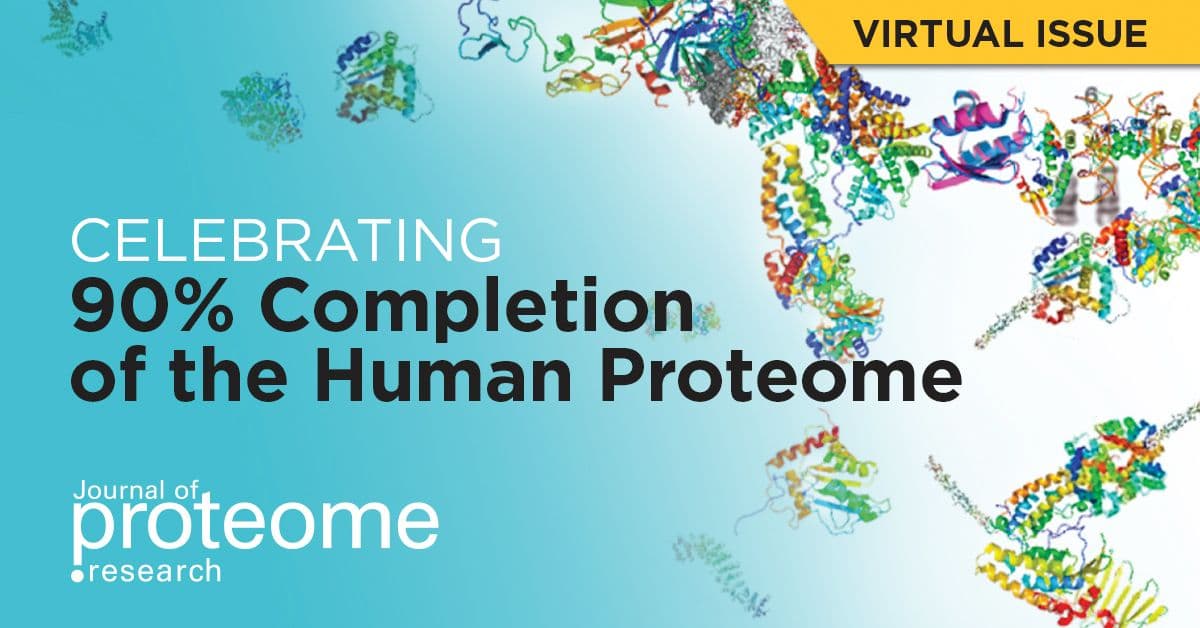
Twenty years after the establishment of the international Human Proteome Organization (HUPO) and ten years after its launch of the Human Proteome Project (HPP), researchers have much to celebrate. Today, HUPO will release the draft human proteome at the 19th Human Proteome Organization World Congress, connecting virtually, with this Virtual Issue published in the Journal of Proteome Research.
Read the Issue . ***
Nanomaterials-based Membranes for Chemical Separations
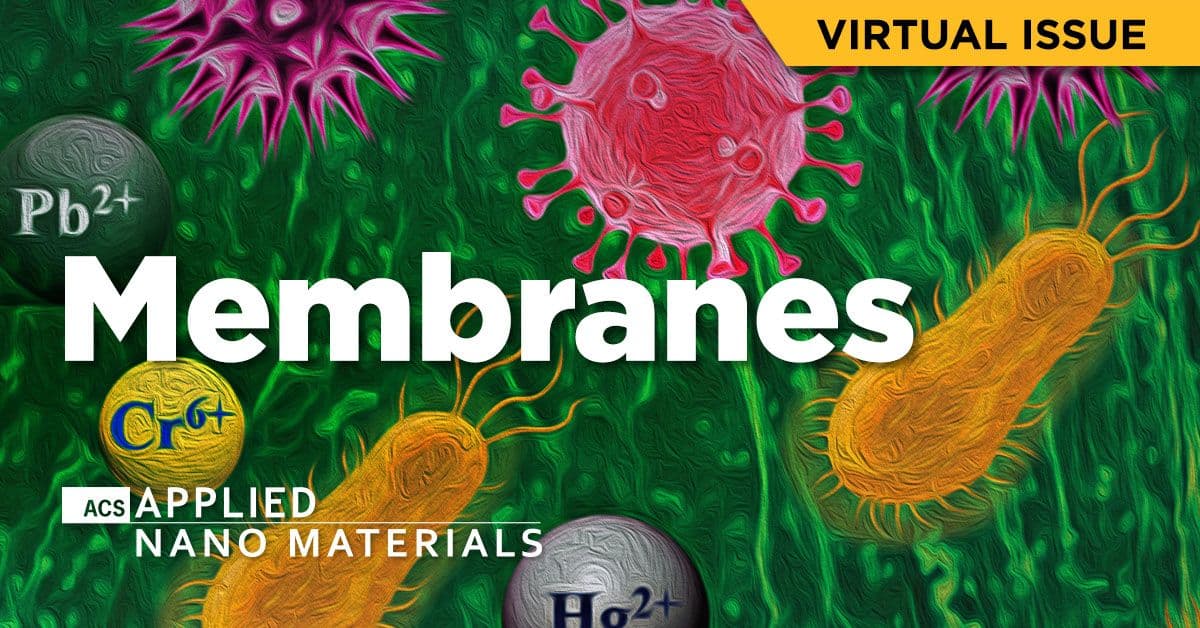
Membranes are a critical area of research in academia and have been used in industrial applications for decades. Membrane-based separations are desired in industry because they can be highly energy efficient and up to an order of magnitude less expensive than other techniques such as distillation. In addition, these separations are easily scaled to industrial levels so that advances in the laboratory can be translated to real applications. The key challenges in this field are how to separate chemicals with similar sizes by having a high flux for only one chemical through a membrane. This difference in flux should translate into a high selectivity for one chemical over one or more other chemicals present in a mixture. An unfortunate trade-off in membrane-based separations is that as the permeation of a chemical increases, the selectivity of the membrane will often decrease. To address these challenges, scientists often use cross-linked polymers with ill-defined pores, hard materials such as zeolites with well-defined pores, 2D materials, coated nanofibers, carbon nanotubes, metal nanoparticles, or other nanomaterials.
Organic Chemistry in China: Synthetic Methodology, Natural Products, and More
During the past 20 years, China has become a powerhouse in chemistry research, now leading globally in submissions of research articles to chemical journals. In recognizing these developments, Organic Letters presents a Virtual Issue that includes a collection of 25 research articles contributed by Chinese chemists during 2019-2020, selected from among the more than 1,000 articles published in the journal from China over this period.
Advances in Microfluidics Research
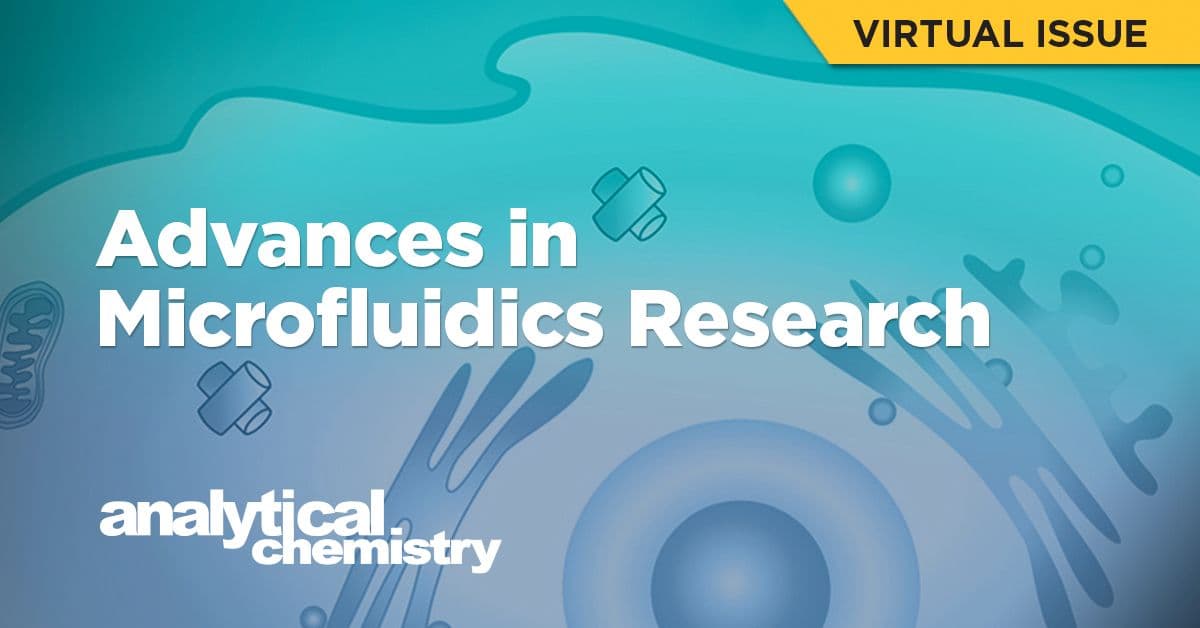
This Virtual Issue highlights articles published in Analytical Chemistry that showcase advances in microfluidics research over the past several years. The articles below are separated by sub-field and span research on virus detection to cell manipulation to 3D-printing, and are all at the cutting edge of microfluidics technologies. The thirty articles included in this collection were selected by Associate Editor Yoshinobu Baba and include previous winners of the Chemical & Biological Microsystems Society (CBMS)/ Analytical Chemistry co-sponsored Young Innovator Award.
Chemistry in Korea: IBS and Beyond

This virtual issue of “Chemistry in Korea: IBS and Beyond” highlights the latest contributions from eight IBS centers along with exciting advances from other emerging scientists in South Korea. Topics encompass a wide range of chemistry and its cross-boundary researches from theory and simulations, nanomaterials, molecular synthesis, catalysts, spectroscopy, supramolecular chemistry, soft materials to nanomedicine.
Highlighting Analytical Chemistry 2020 Advisory Board Members

The members of Analytical Chemistry ‘s Editorial Advisory Board (EAB) and Early Career Board (ECB) panels devote substantial voluntary time and energy to support Analytical Chemistry and deserve special recognition for their contributions. In recognition of their service, this new virtual issue is dedicated to the members of both the journal’s EAB and ECB, with each selecting one of their recent Analytical Chemistry articles to highlight.
A Bright New World of Ferroelectrics: Magic of Spontaneous Polarization

Ferroelectric materials featured with spontaneous polarization have experienced a century of vigorous development. The permanent electric dipole moment makes ferroelectric an outstanding multifunctional material for a wide range of applications. Ferroelectrics with unique coupling effects among electric, optical, mechanical, thermal, and magnetic orders, have been developed for a wide range of functional devices and triggered a new world-wide wave of ferroelectric research. This virtual issue highlights some of the key state-of-the-art findings in ferroelectrics published in ACS Applied Materials & Interfaces and ACS Applied Electronic Materials , and the editorial attempts to reflect the rapid development and provide a perspective in this field.
Peter J. Rossky Festschrift
This Virtual Special Issue honors Professor Peter J. Rossky and his contributions to the field of physical chemistry.
Computational and Experimental Advances in Biomembranes

As an integral component of cellular architecture and signalling, cell membranes are central to cell physiology. Comprising a vastly heterogeneous mixture of proteins and lipids, cell membranes are constantly adapting their structural organization to regulate cellular processes. Malfunction at the level of lipid-protein interaction is implicated in numerous diseases, and hence, understanding cell membrane organization at the molecular level is of critical importance. The collection of articles in this Virtual Special Issue from The Journal of Physical Chemistry B provides a survey of the advances in both computational and experimental characterization of the complex processes underlying the behavior of cellular membranes.
Sensors and Industry

In this virtual issue, ACS Sensors and Analytical Chemistry highlight 30 of these outstanding industrial co-authored papers recently published in the two journals. The breadth of the articles in this collection emphasizes the incredible research on diagnostic methods being performed in both universities and industries, and highlights the benefits of collaboration between the two. Read the Issue . ***
Machine Learning in Physical Chemistry

Physical chemistry stands today at an exciting transition state where the integration of machine learning and data science tools into all corners of the field is poised to do nothing short of revolutionizing the discipline. These powerful techniques – when appropriately combined with domain knowledge, tools, and expertise – have led to new physical insights, better understanding, accelerated discovery, rational design, and inverse engineering that transcend traditional approaches to materials, molecular, and chemical science and engineering. This collection of nearly 150 manuscripts from The Journal of Physical Chemistry A / B / C and The Journal of Physical Chemistry Letters reflects the relevance and popularity of this topic in physical chemistry by both the depth and breadth of excellent articles in this exciting collection.
Self-Healing Materials

This is a spotlight on applications discusses developments made over the last six years that have enabled the fabrication of increasingly high-performance spray-coated perovskite solar cells. In particular, the various approaches adopted to spray-cast perovskite films (one-step vs two-step processes) ware charted and the development of sophisticated techniques used to control thin-film crystallinity is described. Finally, remaining research challenges are discussed that, once solved, may allow the mass deployment of low-cost solar energy.
Women in Mass Spectrometry

This virtual issue was assembled to feature talented women mass spectrometrists who publish in JASMS as the corresponding author. The articles compiled are among the most highly cited that were published in the journal in the last 5 years, regardless of gender, and are representative of the best mass spectrometry science reported in JASMS .
In Memory of Mario Molina (1943-2020)

Mario Molina was a Mexican chemist who shared the 1995 Nobel Prize in chemistry with the late F. Sherwood Rowland of UC Irvine and Paul Crutzen of the Max Planck Institute for Chemistry in Mainz “for their work in atmospheric chemistry particularly concerning the formation and decomposition of ozone.” Molina passed away in his birth city of Mexico City at age 77 on 7 October 2020. A physical chemist at heart, Molina published about 80 papers in The Journal of Physical Chemistry . His mentees remember him by celebrating 30 of them. His indelible legacy lives on through his publications, his collaborators, the scholars that he trained, the innovations in experimental design he made, the thousands who were inspired and informed by his science communication, and the millions whose quality of life improved thanks to his work on stratospheric ozone depletion and air quality in megacities.
Women Scientists at the Forefront of Energy Research: A Virtual Issue, Part 3
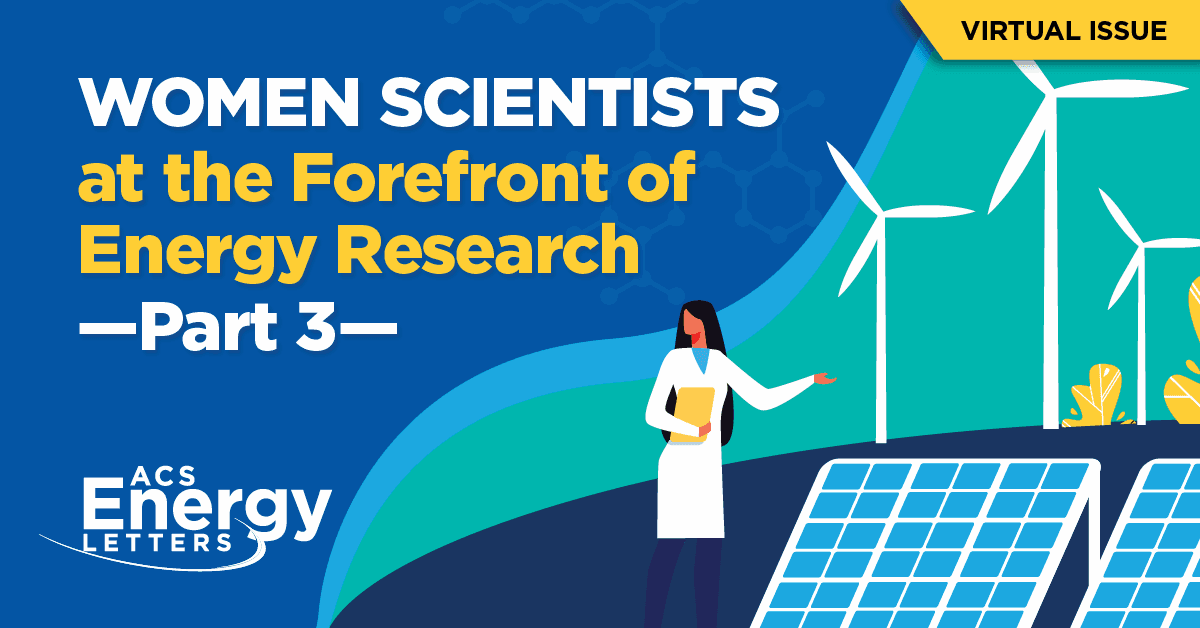
This is the third part of a series that recognizes women energy researchers who have published new advances from their laboratories in ACS Energy Letters . The inspirational stories and advice to newcomers in the field contained in this issue should provide motivation to advance the scientific research in energy conversion and storage. Through their personal reflections, these researchers discuss the successful career paths they have taken to become leaders in the scientific community.
Scalable Organic Chemistry: A Virtual Issue to highlight Organic Process Research & Development

From small-scale use in academic research to large-scale application in industrial processes, only select chemistries make the cut to be relevant throughout the scale-up process. This virtual issue showcases a collection of innovative and industrially-relevant papers on key topics from academic and industrial chemists in Organic Process Research & Development .
Virtual Issue in Memoriam of Dr. Alan Poland (1940-2020)

Dr. Alan Poland was a major influence on the development of modern molecular toxicology and the understanding of how chemicals cause cancer. He is most widely known for his groundbreaking work to explain the adverse effects of dioxins, chemicals and related environmental pollutants.
Deep Eutectic Solvents
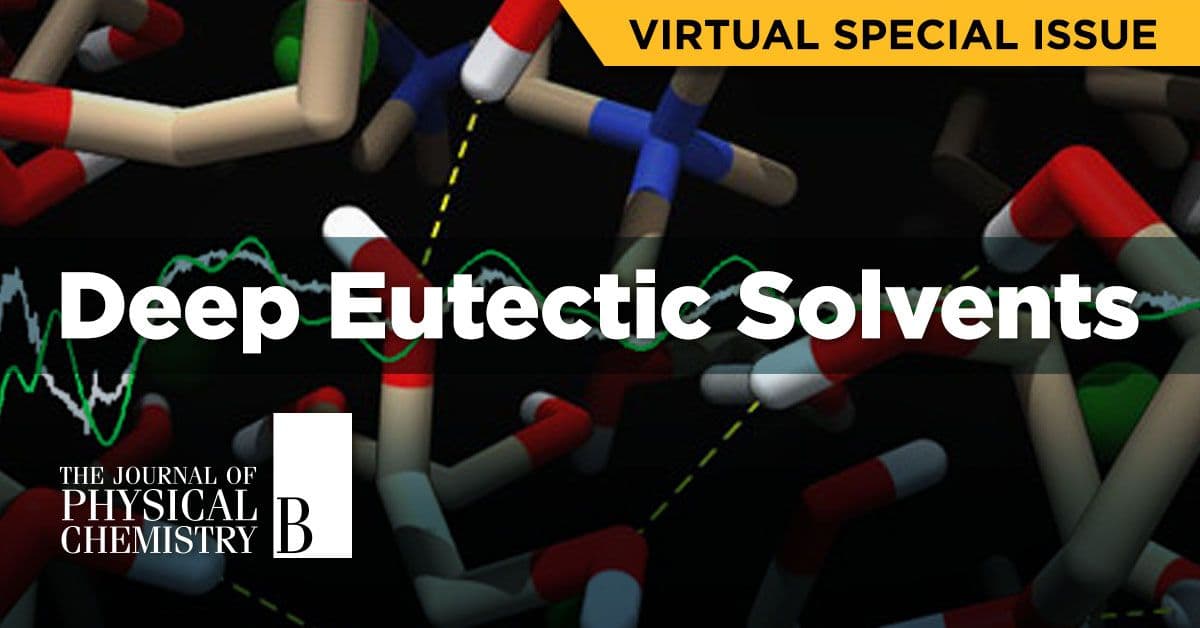
This virtual issue focuses on scientific and engineering advances related to Deep Eutectic Solvents. It includes papers that have appeared in the last two years in ACS Sustainable Chemistry & Engineering , Industrial & Engineering Chemistry Research , Journal of Chemical & Engineering Data , and Journal of Physical Chemistry B and C .
Celebrating ACS Sensors ‘ Editorial Advisory Board


Metal-Organic Frameworks: Fundamental Study and Applications

Exciting developments in metal-organic frameworks (MOFs) are the focus of this Virtual Issue that is jointly produced by Langmuir and ACS Applied Materials & Interfaces ( ACS AMI ). These two journals publish complementary and ground-breaking work on interfacial science. ACS AMI has a strong focus on practical applications whereas Langmuir encourages reports of both fundamental and applied nature, when rational design is a highlighted feature of the work.
Inorganic Synthesis in Uncommon Reaction Media
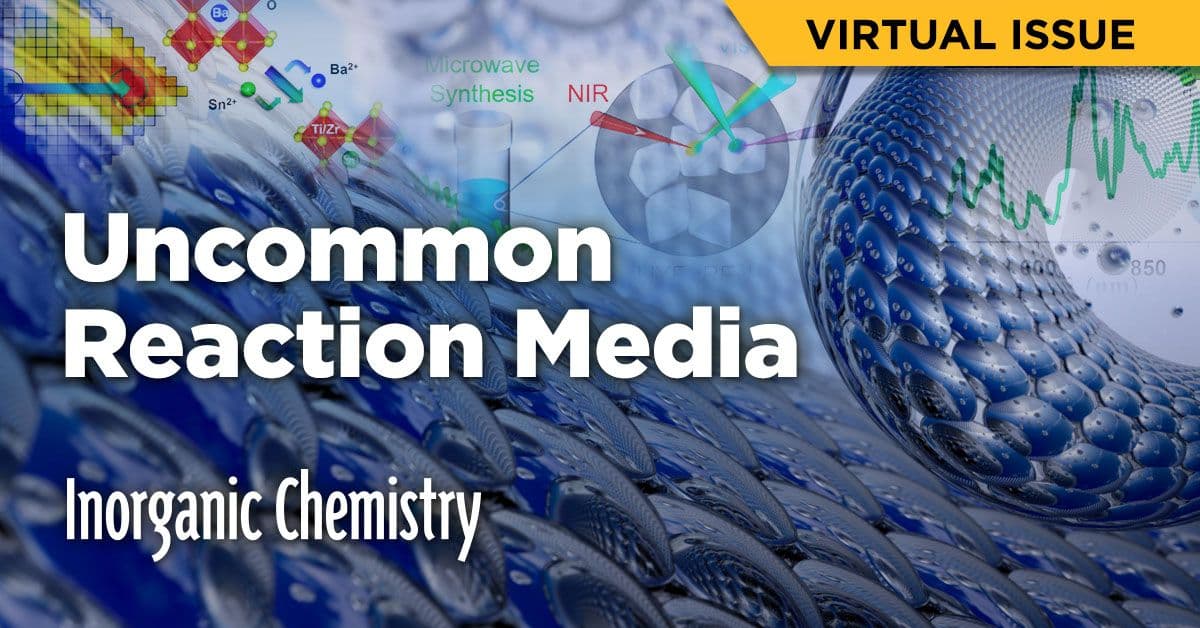
Water and organic solvents have long been the most common reaction media for chemical synthesis. Nevertheless, given limits in solubility and the need for extreme temperatures sometimes, especially for inorganic substances, chemists have had a growing interest in moving to “uncommon” reaction media to improve the access to certain compounds or to permit the fundamental study of the behavior of chemicals under unique conditions. In this Virtual Issue, “Inorganic Synthesis in Uncommon Reaction Media,” Guest Editor Julia Chan and Associate Editor Stefanie Dehnen highlight recent reports from Inorganic Chemistry and additionally from Chemistry of Materials and Crystal Growth & Design that feature reactions taking place in currently used uncommon systems: molten metals (metal flux), molten salts (nonmetal flux), ionic liquids (ionothermal if carried out under elevated temperatures), supercritical solvents (solvothermal), and liquefied gases.
The Challenge of Antibacterial Drug Permeation and Current Advances

Recent advances in the area of drug permeation feed the pipeline of antibacterial agents with new and improved activities and keep the ever-changing landscape of antibiotic resistance effectively managed by small molecule therapeutics. The articles included in this Virtual Issue broadly represent three areas of research: 1) new experimental approaches to analyze intracellular accumulation of compounds in whole cells and compound permeation across model membranes; 2) new computational models of drug permeation across the outer membrane and integrated kinetic models of drug permeation across membranes with active efflux; and 3) new antibiotic screening campaigns and exploration of synergistic drug combinations bypassing bacterial permeation barriers.
Organic Chemistry in Japan: A Strong Foundation and Honorable Tradition
Organic chemistry has a strong foundation and honorable tradition in Japan, centering in recent decades predominantly on the development of synthetic methodologies, particularly in an interdisciplinary fashion focusing on cross-coupling and C-H activation and functionalization, the total synthesis of natural products, chemical biology research, supramolecular chemistry, and applications of (opto)electronic materials—all with an eye toward fostering international collaborations. This new Organic Letters Virtual Issue features 25 selected articles form 2019-2020 to highlight these achievements.

This virtual issue in Environmental Science & Technology ( ES&T ) marks the 50-year anniversary of the United States Environmental Protection Agency (US EPA). Recognizing this significant milestone brings an opportunity to reflect on the enormous achievements and impact this federal agency has had on the remediation and protection of the environment, reaching both domestically within the USA and globally since its official beginnings on December 2nd, 1970.
Bioconjugate Chemistry 30th Anniversary Reviews

The breadth and impact of these 30th anniversary reviews demonstrate how the Bioconjugate Chemistry of today continues the forward-looking embrace of new science and systems while maintaining the old-fashioned virtues of scientific rigor and reproducibility.
Want the latest stories delivered to your inbox each month?

ACS Applied Energy Materials
- Search This Site All UCSD Sites Faculty/Staff Search Term
- Graduate Program
- Chemistry PhD
Research Tracks
- Organic Chemistry
This track represents a broad spectrum of traditional and emerging areas of chemistry involving the synthesis and study of small and large carbon-based molecules. The enormously diverse applications of artificial and natural organic compounds creates strong interdisciplinary efforts in organometallic, physical organic, materials, bioorganic, and natural products chemistry. Many research programs have significant overlap with Chemical Biology and other tracks, as well as efforts within the UCSD School of Medicine, the Skaggs School of Pharmacy and Pharmaceutical Sciences, the UCSD Moores Cancer Center, Nanoengineering and the Scripps Institution of Oceanography.
Course Offerings:
CHEM 252 Synthetic Methods (F)
Chem 254 mechanisms of organic reactions (f), chem 255 synthesis of complex molecules (w), chem 256 structure and properties of organic molecules (w), chem 257 bioorganic and natural products chemistry (s), chem 258 applied spectroscopy (s), course descriptions.
(Conjoined with Chem 152.) A survey of reactions of particular utility in the organic laboratory. Emphasis is on methods of preparation of carbon-carbon bonds and oxidation reduction sequences. For Chem 252, students would be required to complete an additional paper and/or exam beyond that expected of students enrolled in Chem 152. Prerequisites: Chem 140C or 140CH (152), or graduate standing (252).
(Conjoined with Chem 154; formerly Chem 247.) A qualitative approach to the mechanisms of various organic reactions; substitutions, additions, eliminations, condensations, rearrangements, oxidations, reductions, free-radical reactions, and photochemistry. Includes considerations of molecular structure and reactivity, synthetic methods, spectroscopic tools, and stereochemistry. The topics emphasized will vary from year to year. This is the first quarter of the advanced organic chemistry sequence. Chem 254 students will be required to complete an additional paper and/or exam beyond that expected of students in Chem 154. Prerequisites: Chem 140C or 140CH (154), or graduate standing (254).
(Conjoined with Chem 155.) This course discusses planning economic routes for the synthesis of complex organic molecules. The uses of specific reagents and protecting groups will be outlined as well as the control of stereochemistry during a synthesis. Examples will be selected from the recent literature. Chem 255 students will be required to complete an additional paper and/or exam beyond that expected of students in Chem 155. (May not be offered every year.) Prerequisites: Chem 152 or 252 or consent of instructor.
(Conjoined with Chem 156.) Introduction to the measurement and theoretical correlation of the physical properties of organic molecules. Topics covered include molecular geometry, molecular-orbital theory, orbital hybridization, aromaticity, chemical reactivity, stereochemistry, infrared and electronic spectra, photochemistry, and nuclear magnetic resonance. Chem 256 students will be required to complete an additional paper and/or exam beyond that expected of students in Chem 156. Prerequisites: Chem 140C or 140CH (156), or graduate standing (256).
(Conjoined with Chem 157.) A comprehensive survey of modern bioorganic and natural products chemistry. Topics include biosynthesis of natural products, molecular recognition, and small molecule-biomolecule interactions. Chem 257 students will be required to complete additional course work beyond that expected of students in Chem 157. Prerequisites: Chem 140C or 140CH (157), or graduate standing (257).
(Conjoined with Chem 158.) Intensive coverage of modern spectroscopic techniques used to determine the structure of organic molecules. Problem solving and interpretation of spectra will be strongly emphasized. Students will be required to write and submit a paper that reviews a recent research publication that reports the structure determination by spectroscopic methods of natural products. Recommended: one year of organic chemistry with laboratory.

Bertrand, Guy

Burkart, Michael

Cohen, Seth

Devaraj, Neal

Ferguson, Fleur

Figueroa, Joshua

Godula, Kamil

Hermann, Thomas

Klosterman, Jeremy

Molinski, Tadeusz

O'Connor, Joseph

Romero, Erik

Romero, Nathan

Schmidt, Valerie

Siegel, Dionicio

Stauber, Julia

Theodorakis, Emmanuel

Tor, Yitzhak

Weizman, Haim

Yang, Jerry
- Analytical and Atmospheric Chemistry
- Biochemistry and Biophysics
- Chemical Biology
- Inorganic Chemistry
- Materials Chemistry
- Physical Chemistry
- Theoretical and Computational Chemistry
- College of Arts & Sciences
- Graduate Division
- College of Liberal and Professional Studies

- PhD Program
Chemistry PhD Program
The University of Pennsylvania is an internationally renowned research institution that attracts the best students from the United States and around the globe. The Graduate Program is designed for students who wish to earn a Ph.D. in Chemistry while undertaking cutting edge research. The program provides students with the necessary theoretical background and hands-on training to become independent and highly successful scientists. Graduate students achieve mastery of advanced chemistry topics through courses in different subdisciplines. Broad exposure to current research also occurs via four weekly departmental seminar programs and many interdisciplinary, university-wide lecture series.
Currently, faculty, students, and postdoctoral associates in Chemistry work in the fields of bioinorganic chemistry, bioorganic chemistry, chemical biology, biophysical chemistry, bioinformatics, materials science, laser chemistry, health related chemistry, structural and dynamical studies of biological systems, X-ray scattering/diffraction, NMR spectroscopy, applications of computing and computer graphics, as well as investigations of chemical communication and hormone-receptor interactions. Many research groups combine different techniques to explore frontier areas, such as nanomaterials applied to biology, photoactive biomolecules, and single-molecule imaging. Novel synthetic procedures are under constant development for targets ranging from super-emissive nanoparticles to highly specialized drug molecules and giant dendrimers, which are being explored, for example, as drug-delivery systems. The Research Facilities in the Department of Chemistry provide a strong technology base to enable the highest level of innovation. Graduate students are a driving, integral force at Penn Chemistry.

IMAGES
VIDEO
COMMENTS
50 Intriguing Organic Chemistry Research Ideas. Green Synthesis of Organic Compounds: Explore eco-friendly methods for synthesizing organic molecules.; Applications of Organometallic Chemistry: Discuss the use of organometallic compounds in catalysis and materials science.; Designing Sustainable Polymers: Investigate the development of biodegradable and recyclable polymers.
Organic Сhemistry Research Topics. Organic chemistry is the study of carbon-containing molecules. There are many different organic chemistry research topics that a student could choose to focus on and here are just a few examples of possible research projects in organic chemistry: Investigating new methods for synthesizing chiral molecules
Important Current Research Topics in Organic Synthesis. This guide is intended to list some topics for Organic Chemists that one might specialize in: Sustainable and Green Chemistry: The development of more environmentally friendly and sustainable methods for synthesizing organic molecules is an important area of research. This includes the use of renewable resources, catalysts, and solvents ...
Entry requirements for a PhD in Organic Chemistry . The minimum entry requirement for a PhD in Organic Chemistry is usually a 2:1 undergraduate degree in a relevant subject, such as Biology, Chemistry or Physics, along with a Masters qualification. You may be asked to submit a research proposal as part of your application.
Organic chemistry has a strong foundation and honorable tradition in Japan, centering in recent decades predominantly on the development of synthetic methodologies, particularly in an interdisciplinary fashion focusing on cross-coupling and C-H activation and functionalization, the total synthesis of natural products, chemical biology research ...
The topics emphasized will vary from year to year. This is the first quarter of the advanced organic chemistry sequence. Chem 254 students will be required to complete an additional paper and/or exam beyond that expected of students in Chem 154. Prerequisites: Chem 140C or 140CH (154), or graduate standing (254).
Advances our understanding of how atoms, ions, and molecules come together and come apart. It explores the role of chemistry in our everyday lives - from electronic devices to health and wellbeing.
FindAPhD. Search Funded PhD Projects, Programmes & Scholarships in organic chemistry. Search for PhD funding, scholarships & studentships in the UK, Europe and around the world.
FindAPhD. Search Funded PhD Research Projects in Chemistry, Organic Chemistry, organic synthesis. Search for PhD funding, scholarships & studentships in the UK, Europe and around the world.
Chemistry PhD Program. The University of Pennsylvania is an internationally renowned research institution that attracts the best students from the United States and around the globe. The Graduate Program is designed for students who wish to earn a Ph.D. in Chemistry while undertaking cutting edge research.